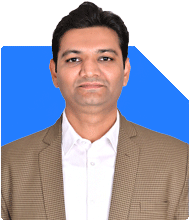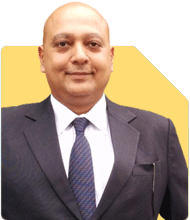Ramalingam Kalirajan |8291 Answers |Ask -Follow
Mutual Funds, Financial Planning Expert - Answered on Apr 30, 2024
He has an MBA in finance from the University of Madras and is a certified financial planner.
He is the director and chief financial planner at Holistic Investment, a Chennai-based firm that offers financial planning and wealth management advice.... more

Hi Sir, I am 41 years old I would like to know that should I repay my Home Loan . My pending Loan tenor is 126 months amount is Rs.16,70,000.00. I have investment in PPF that is around 12 Lakhs getting due on Oct-2025. and investment in Mutual funds worth around 3.5 Lakhs. I wish to repay the loan from this two investments. I earnings are from Salary which is around 8,00,000/-. as i come under 30% tax bracket.
Interest Rate Differential: Compare the interest rate on your home loan with the return on your PPF and mutual fund investments. If the interest rate on your home loan is higher than the return on your investments, it may be beneficial to repay the loan.
Tax Benefits on Home Loan: Evaluate the tax benefits you receive on your home loan repayment. Home loan repayments qualify for tax deductions under Section 80C of the Income Tax Act. If you avail of these tax benefits, consider the impact of loan repayment on your tax liability.
Liquidity Needs: Assess your liquidity needs and financial goals. Repaying the home loan will reduce your debt burden but may tie up a significant portion of your investments. Ensure you have sufficient emergency funds and consider the impact on your long-term financial goals.
Investment Horizon: Consider the investment horizon of your PPF and mutual fund investments. If you have a longer investment horizon and expect higher returns from these investments compared to the home loan interest, you may choose to continue investing and repay the loan gradually.
Overall Financial Picture: Review your overall financial situation, including other debts, expenses, and retirement planning. Ensure that loan repayment aligns with your financial goals and improves your financial well-being in the long run.
It's advisable to consult with a financial advisor or tax consultant who can provide personalized guidance based on your specific circumstances and help you make an informed decision.
You may like to see similar questions and answers below
Ramalingam Kalirajan |8291 Answers |Ask -Follow
Mutual Funds, Financial Planning Expert - Answered on May 07, 2024
Ramalingam Kalirajan |8291 Answers |Ask -Follow
Mutual Funds, Financial Planning Expert - Answered on May 24, 2024
Milind Vadjikar |1189 Answers |Ask -Follow
Insurance, Stocks, MF, PF Expert - Answered on Nov 28, 2024
Dr Dipankar Dutta |1165 Answers |Ask -Follow
Tech Careers and Skill Development Expert - Answered on Apr 24, 2025
Dr Dipankar Dutta |1165 Answers |Ask -Follow
Tech Careers and Skill Development Expert - Answered on Apr 24, 2025
Dr Dipankar Dutta |1165 Answers |Ask -Follow
Tech Careers and Skill Development Expert - Answered on Apr 24, 2025
Dr Dipankar Dutta |1165 Answers |Ask -Follow
Tech Careers and Skill Development Expert - Answered on Apr 24, 2025
Vipul Bhavsar |58 Answers |Ask -Follow
Tax Expert - Answered on Apr 24, 2025
Radheshyam Zanwar |1565 Answers |Ask -Follow
MHT-CET, IIT-JEE, NEET-UG Expert - Answered on Apr 24, 2025
Radheshyam Zanwar |1565 Answers |Ask -Follow
MHT-CET, IIT-JEE, NEET-UG Expert - Answered on Apr 24, 2025
Sushil Sukhwani |594 Answers |Ask -Follow
Study Abroad Expert - Answered on Apr 24, 2025
Sushil Sukhwani |594 Answers |Ask -Follow
Study Abroad Expert - Answered on Apr 24, 2025
Sushil Sukhwani |594 Answers |Ask -Follow
Study Abroad Expert - Answered on Apr 24, 2025






















